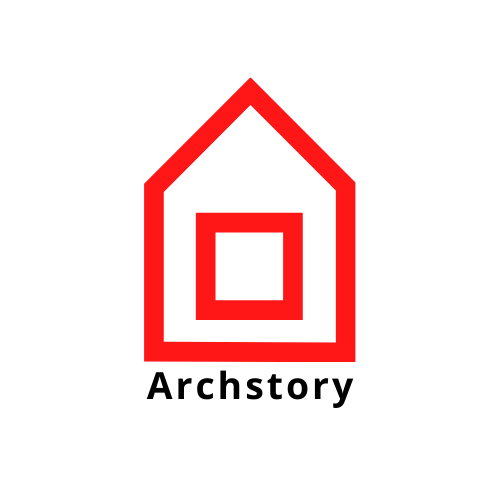
MVRDV-Matrix ONE
이 건물은 MVRDV가 설계한 암스테라담 사이언스 파크의 중심부에 위치한 실험실 겸 사무실인 건물이다. 이 건물은 매트릭스 이노베이션 센터의 주요 허브 역할을 하고 있다. 규모는 13,000제곱미터 규모의 6층 건물이고, 업무시설과 편의 시설을 제공한다. 이 건물의 주요 특징은 BREAAM-Excellent 인증을 받았고 지속가능한 건물로서의 역할이다. 건물은 탈부착이 가능하도록 설계되었다. 나사 및 볼트와 같은 간단한 연결을 통해 건물의 다양한 부분이 변경될때 요소를 분리하고 재사용이 쉽도록 설계되었다. 바닥도 고정 연결부가 없는 조립식 콘크리트 슬래브를 사용하여 건물 수명이 다한 후에도 재사용 할수 있다. 건물의 재료 뿐만 아니라 지붕에는 1,000제곱미터의 태양열 패널로 구성되었다.
MVRDV 디자인의 핵심요소는 캠퍼스 전체에서 볼 수 있는 지그재그 경로의 연속으로 개념화된 소셜 계단이다. 이 계단은 서로 다른 산업 분야의 근로자를 모아 아이디어를 공유하고 다양한 커뮤니티가 이러날 수 있도록 한다. 이 소셜 계단은 1층 레스토랑과 계단 꼭대기에 바가 있는 건물의 변의 시설로 연결된다. 이러한 소셜 기능은 클럽매트릭스를 형성하며 주변 매트릭스 건물의 모든 근로자가 사용할 수 있다. 건물에는 또한 100석 규모의 강당이 있어 매트릭스 원이 지식을 만들고 공유하는 중앙 허브로서의 역할을 확인시켜 줬다.
The construction of Matrix ONE, the MVRDV-designed laboratory and office building in the heart of Amsterdam Science Park, is now complete. Serving as the main hub of the Matrix Innovation Center, the six-story, 13,000-square-metre building provides the campus with key social spaces and amenities. Crucially, the project also pushes the envelope in sustainable design: from demountable construction, the “social stairs”, and solar energy generation to smart lighting and generous amounts of bicycle parking, it incorporates sustainable thinking from every possible angle. Matrix ONE meets ambitious Amsterdam energy-use targets and is certified BREAAM- Excellent. The building's users are also working on sustainability solutions: the University of Amsterdam's SustainaLab works here on technologies for a sustainable future.
Matrix ONE is the largest of seven buildings that now make up the Matrix Innovation Center, part of Amsterdam Science Park, where scientists and entrepreneurs work on sustainable solutions for current and future problems. Matrix ONE itself contains a mixture of science laboratories and offices for tech companies including Qualcomm and sustainability companies such as Photanol, Skytree, and the startup FUL Foods.
As the main building of the Matrix Innovation Center, Matrix ONE aims to be a sustainable example for the other buildings in Amsterdam Science Park and beyond. The building is designed to be demountable. Simple connections such as screws and bolts allow elements to be detached and reused when various parts of the building are updated; even the building’s floors are made using prefabricated concrete slabs with no fixed connections, allowing them to be reused at the end of the building’s lifespan. The platform Madaster provides a comprehensive material passport system to give insight into the materials and products used and the CO2 storage for over 120,000 individual components. As a result, over 90% of the building’s materials can be reused again later.
On the roof, 1,000 square meters of solar panels generate a portion of the building’s energy, while internet-connected lighting and heating fixtures help to reduce energy consumption (power for critical lab equipment runs on a separate circuit). With this combination of energy generation and reduced energy consumption, the building itself produces a significant proportion of the energy it consumes and therefore meets the ambitious Amsterdam targets for energy performance.
As the main building of the Matrix Innovation Center, Matrix ONE serves as the social hub of the campus. A key element of MVRDV’s design is the large “social staircase” immediately next to the main entrance on the building’s southern corner, which is conceptualized as a continuation of the zig-zagging paths that are found throughout the campus. With tribune-style seating for presentations, tables for informal meetings, and coffee stations, these stairs bring together workers from different industries, allowing them to mingle and share ideas. The interior design for this space, developed by MVRDV in collaboration with Up architecture, includes multiple lush green walls that are visible through the glass façade, while soft felt finishes elsewhere dramatically reduce sound reverberation, lending the social spaces a calm and intimate atmosphere.
This social staircase is complemented by the building’s amenities, with a ground-floor restaurant and a bar at the top of the staircase. These social features form “Club Matrix”, available for use by workers from all of the surrounding Matrix buildings. The building also includes a 100-seat auditorium, confirming Matrix ONE as a central hub for creating and sharing knowledge.
“Matrix ONE offered an excellent opportunity for us to test a number of the carbon-reduction strategies we have long been investigating at MVRDV”, says MVRDV partner Frans de Witte. “The building is state-of-the-art now, but it also acknowledges that the state-of-the-art is constantly changing. So we made both the interior spaces and the technical installations that serve them as flexible as possible; offices can easily be modified to become labs and vice versa, and labs can be easily upgraded with new systems to accommodate changing standards. In the decades to come when the building is no longer cutting-edge, it will become a source to harvest materials from for other buildings. In the future, we hope this is how all buildings will work – and we’re excited to see Matrix ONE become a standard-bearer in our office.”
Matrix ONE also encourages users to lead a healthy lifestyle: the location of the social stair encourages people to use the stairs instead of the elevators, which are found deeper inside the building, accessed via the atrium. On the rear of the building, a secondary entrance includes access to a bicycle parking facility that is directly accessible and visible from the atrium, encouraging those who work in the building to cycle instead of driving. As a result of all of these sustainability and health measures, the building has received BREEAM-Excellent certification.
Photography by Daria Scagliola











from archdaily
